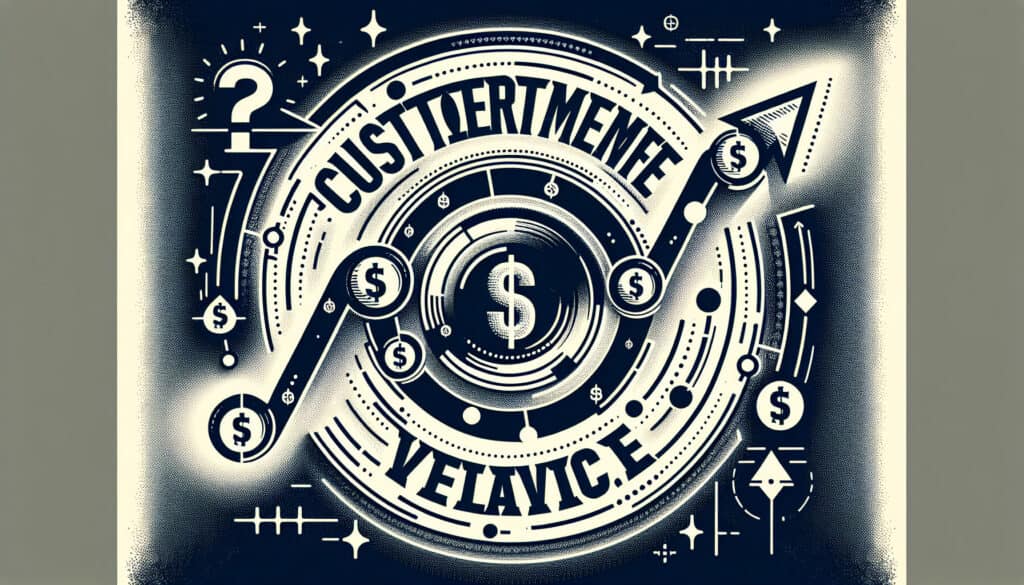A predictive metric that forecasts the total net profit a company can expect to earn from a customer throughout their entire relationship.
- Méthodologies : Clients et marketing, Idéation, Conception de Produits
Customer Lifetime Value (CLV)

Customer Lifetime Value (CLV)
- Expérience client, Cartographie de l'itinéraire du client, Support client, Commercialisation, Stratégie marketing, Développement de produits, Gestion de produits, Proposition de valeur, Cartographie de la chaîne de valeur
Objectif :
Comment il est utilisé :
- CLV is calculated by estimating a customer's future purchases and subtracting the costs to serve and acquire them. It's used to inform decisions on marketing spend, customer retention, and sales strategies.
Avantages
- Shifts focus from short-term sales to long-term customer relationships; helps to identify the most valuable customer segments; optimizes marketing and retention spending.
Inconvénients
- Can be complex to calculate accurately, as it relies on predictive models and assumptions; historical data may not predict future behavior.
Catégories :
- Clients et marketing, Économie
Idéal pour :
- Making strategic decisions about sales, marketing, and customer service by understanding the long-term profitability of different customers.
Customer Lifetime Value (CLV) serves as a foundation for various strategic initiatives across multiple industries, including retail, e-commerce, subscription services, and SaaS (Software as a Service) businesses, where understanding customer behavior and purchase patterns is paramount. In project phases focused on customer acquisition and retention, CLV can influence decisions related to product design, marketing campaigns, and customer service improvements. For example, in a subscription-based model, predictive analytics can be utilized to anticipate customer churn and develop programs aimed at increasing retention based on the lifetime value of high-risk customers versus the costs associated with acquiring new ones. Participants in utilizing CLV calculations often include marketing teams, data analysts, product managers, and finance departments, all collaborating to refine strategies that drive maximum profitability. Companies can leverage CLV analysis to segment their customer base, prioritizing resources to nurture relationships with high-value clients, while allowing for more targeted marketing efforts that optimize budget allocation. For instance, understanding that a segment of customers may yield a higher CLV leads to personalized marketing strategies, tailored promotions, and enhanced customer experiences, ultimately building loyalty and engagement over time. The methodology also supports resource allocation decisions, ensuring that marketing funds are spent wisely on customer segments that promise the greatest return in the long run, significantly influencing a company’s growth trajectory and market positioning.
Principales étapes de cette méthodologie
- Segment customers based on their purchasing behavior and profitability.
- Estimate the average purchase value for each segment.
- Calculate the average purchase frequency for each segment over a defined period.
- Determine the customer lifespan for each segment based on retention rates.
- Calculate the Customer Lifetime Value (CLV) using the formula: CLV = (Average Purchase Value) x (Average Purchase Frequency) x (Customer Lifespan).
- Subtract the customer acquisition costs and service costs from CLV to assess net profitability.
- Analyze the results to identify the most profitable customer segments.
- Integrate CLV insights into marketing and customer retention strategies.
Conseils de pro
- Utilize predictive analytics to enhance CLV models, incorporating factors like customer behavior, purchasing patterns, and market trends for more accurate forecasts.
- Segment customers based on CLV scores for targeted marketing efforts, ensuring high-value segments receive tailored incentives that maximize retention and engagement.
- Continuously iterate on your cost structure analysis by incorporating direct and indirect costs tied to customer support, ensuring strategies are aligned with profitability metrics.
Lire et comparer plusieurs méthodologies, nous recommandons le
> Référentiel méthodologique étendu <
ainsi que plus de 400 autres méthodologies.
Vos commentaires sur cette méthodologie ou des informations supplémentaires sont les bienvenus sur le site web de la Commission européenne. section des commentaires ci-dessous ↓ , ainsi que toute idée ou lien en rapport avec l'ingénierie.
Contexte historique
1960
1980
1983
1990
1995
2000
2010
1950
1980
1980
1986
1994
1995
2000
(si la date est inconnue ou n'est pas pertinente, par exemple "mécanique des fluides", une estimation arrondie de son émergence notable est fournie)














Articles Similaires
Questionnaires sur les troubles musculo-squelettiques
Tests à plusieurs variables (MVT)
Analyse de régression multiple
Systèmes de capture de mouvement
Méthode MoSCoW
Test de la médiane de Mood